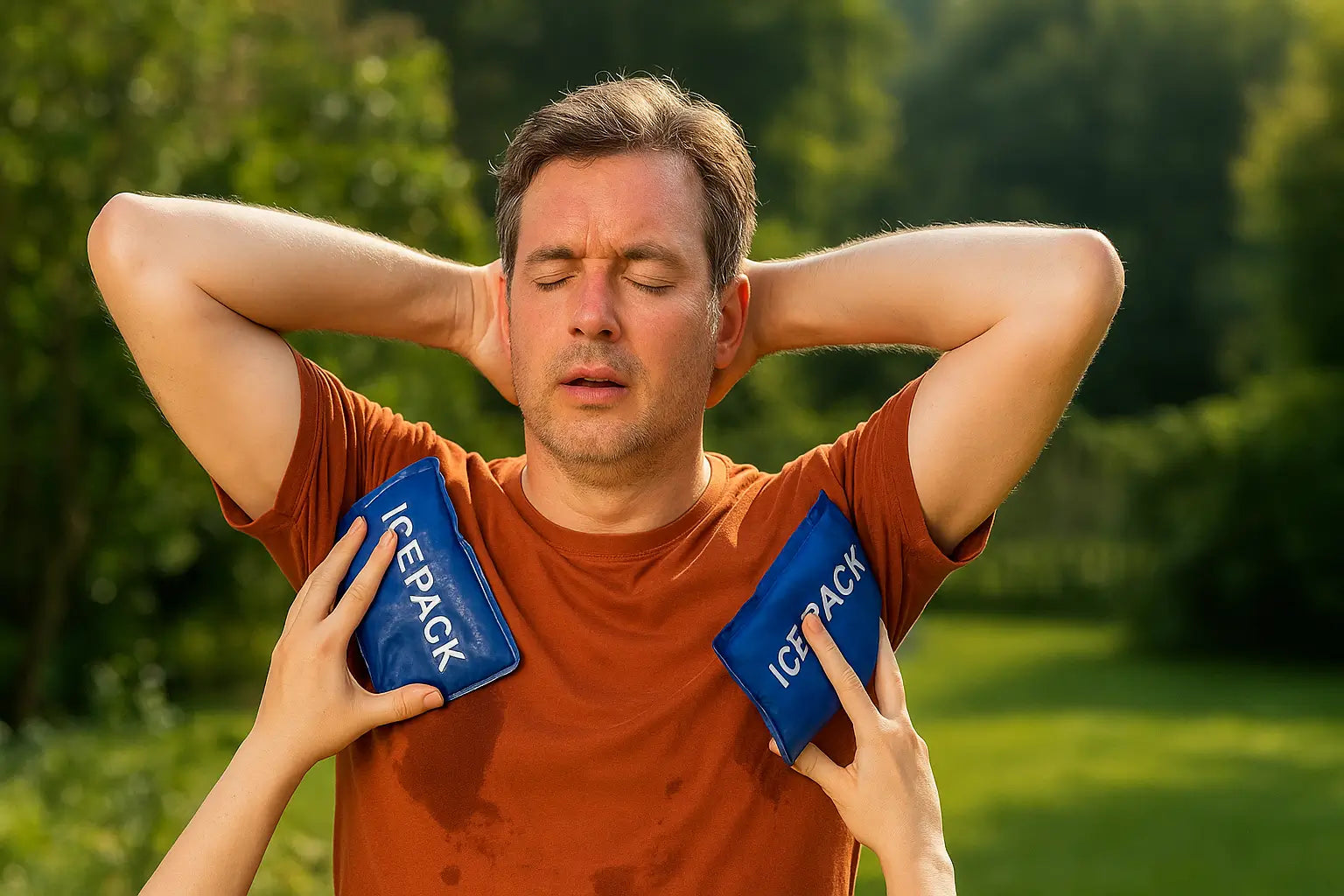Recognising and Treating Heat Stroke: What You Need to Know This Summer
As UK summers grow hotter, knowing how to identify and respond to heat stroke (also known as hyperthermia) is essential—especially if you're working outdoors, hiking, camping, or simply enjoying a sunny day in the garden. Heat stroke is a serious medical emergency, and quick action can save lives.
What Is Heat Stroke?
Heat stroke occurs when the body can no longer regulate its internal temperature. This happens after prolonged exposure to high temperatures, often combined with dehydration. Your core body temperature can soar to dangerous levels—above 40°C (104°F)—leading to potentially life-threatening complications.

Early Warning Signs: Recognising Heat Stroke
Understanding the symptoms is crucial for early intervention. Look out for:
-
High body temperature (over 40°C)
-
Hot, red, dry or damp skin
-
Fast, strong pulse
-
Dizziness or confusion
-
Headache
-
Nausea or vomiting
-
Loss of coordination
-
Unconsciousness (in severe cases)
If someone stops sweating despite the heat, it’s a red flag—this often means the body’s cooling system has failed.
What to Do: Treating Heat Stroke Quickly
If you suspect someone has heat stroke:
-
Call 999 immediately – This is a medical emergency.
-
Move the person to a cooler environment – Indoors, under shade, or anywhere out of direct sunlight.
-
Cool them down rapidly:
-
Remove excess clothing.
-
Apply cold water with a sponge or cloth.
-
Use fans, cold packs on neck/groin/armpits, or wet towels.
-
-
Hydration is vital—but only if they’re conscious – Offer small sips of cool water while awaiting medical help.
Never give them caffeine or alcohol and avoid overhydrating too quickly.

Who’s Most at Risk?
Anyone can develop heat stroke, but those at higher risk include:
-
Outdoor workers and tradespeople
-
Hikers, campers, and festivalgoers
-
Children and older adults
-
People with chronic health conditions
-
Athletes and fitness enthusiasts
How to Prevent Heat Stroke
Prevention is far easier than treatment. Take these proactive steps:
-
Wear light, moisture-wicking clothing – Subzero’s breathable summer base layers help regulate body temperature and draw sweat away from your skin.
-
Stay hydrated – Always carry water and drink regularly, even if you’re not thirsty.
-
Take breaks in the shade – Especially during peak sun hours (11am–3pm).
-
Protect your head and eyes – Wear sunglasses and a sun hat to protect yourself from direct heat exposure.
-
Be mosquito smart – Apply repellent if you're in shaded or garden areas to avoid bites while resting in cooler spots.

Final Thoughts
Heat stroke is preventable, but only if you recognise the warning signs early and take swift action. Whether you’re hiking in the hills or working in a garden, staying cool, hydrated, and properly dressed can make all the difference. At Sub Zero we manufacture technical summer base layers, and stock sun hats through to insect protection, helping you thrive—no matter how high the temperature climbs.
